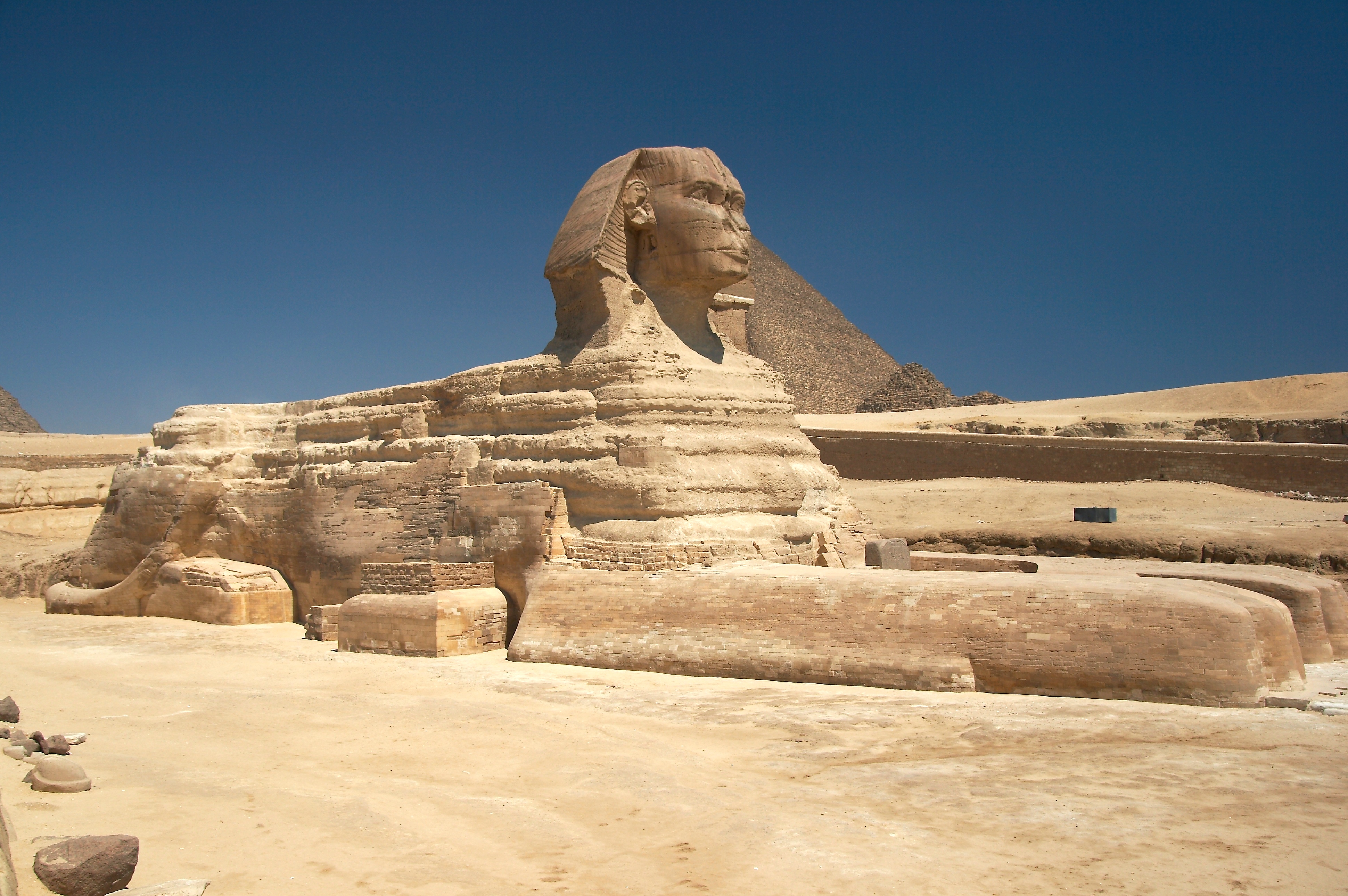
The Great Sphinx of Giza, with the Pyramid of Khafra in the background
A sphinx (Greek: Σφίγξ /sphinx, Bœotian: Φίξ /Phix) is a mythical creature with a lion's body and a human head.
The sphinx, in Greek tradition, has the haunches of a lion, the wings of a great bird, and the face and breast of a woman. She is mythicised as treacherous and merciless. Those who cannot answer her riddle suffer a fate typical in such mythological stories, as they are killed and eaten by this ravenous monster.[1] Unlike the Greek sphinx which was a woman, the Egyptian sphinx is typically shown as a man (an androsphinx). In addition, the Egyptian sphinx was viewed as benevolent in contrast to the malevolent Greek version and was thought of as a guardian often flanking the entrances to temples.

Perhaps, the first sphinx, Queen Hetepheres II from the fourth dynasty (Cairo Museum)
In European decorative art, the sphinx enjoyed a major revival during the Renaissance. Later, the sphinx image, something very similar to the original Ancient Egyptian concept, was exported into many other cultures, albeit often interpreted quite differently due to translations of descriptions of the originals and the evolution of the concept in relation to other cultural traditions.
Generally the role of sphinxes is associated with architectural structures such as royal tombs or religious temples. The oldest known sphinx was found in Gobekli Tepe, Turkey and was dated to 9,500 BC.

 07:18
07:18
 homesweethome
homesweethome

 Posted in:
Posted in: 








0 意見:
Post a Comment